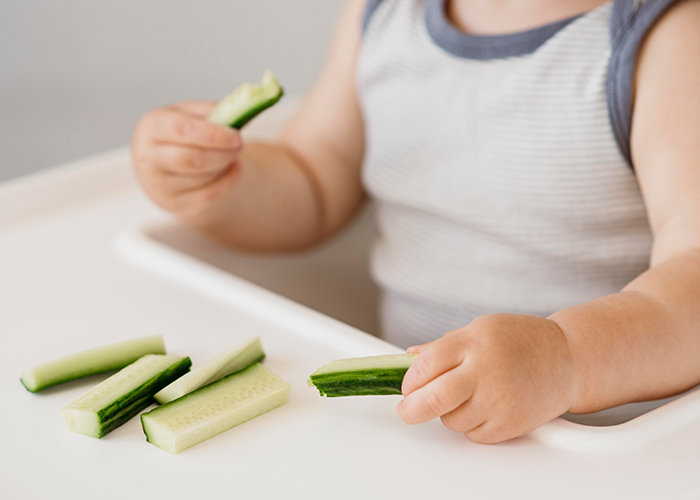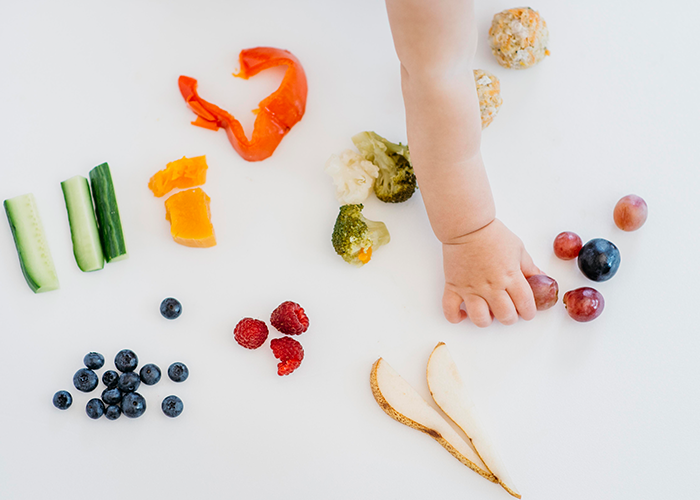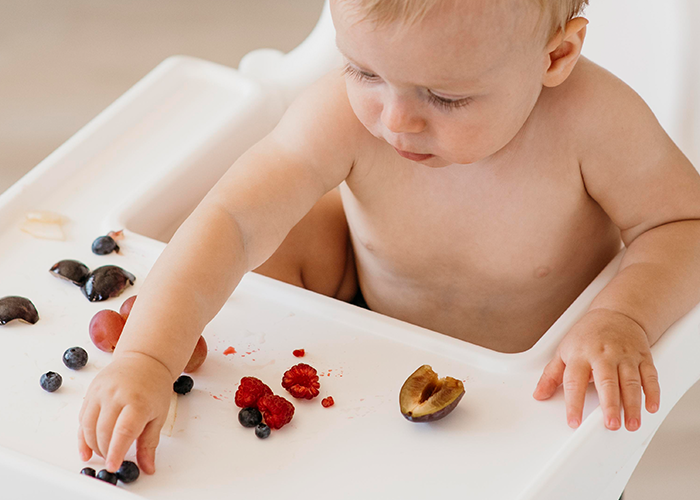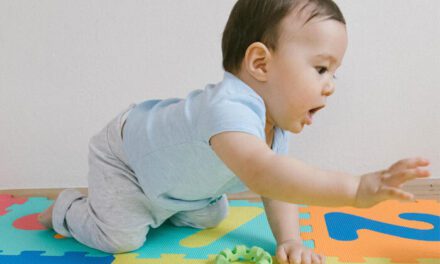Among the many firsts of your little one: first smile, first word, first step, there lies an important life skill, i.e. the first time they feed themselves. One way to induce your child for this is Baby-Led Weaning. It is a practice where the child is in charge of their mealtime and starts learning how to feed themselves. This piece is written in correspondence with the above-discussed idea and what all the new parents need to know to ace their parenting style. All this to help your child live a happy and healthy life.
Benefits Of Baby-led Weaning
Baby-led weaning has several advantages for both parents and babies:
- Saves time and money – As we all know, baby foods are expensive, so offering the entire family the same food saves both money and meal prep time.
- Exposure to valuable social interactions – Family mealtime offers positive social and developmental reinforcement for the babies as they learn a lot by watching us.
- Introduction to variety – Usually, all baby foods have soft textures. Baby-led weaning exposes babies to a wider variety of foods — and, as a result, a wider range of tastes and textures.
- Helps in the overall development – Letting babies evaluate their appetite, feelings of hunger and fullness can be extremely beneficial as it will further help in self-regulation and avoiding overeating.
When To Start Baby-Led Weaning?

Babies generally start to self-feed at 6 months of age
There is no definite answer to this as it depends on many different factors, including the height, weight, mental health, etc., of an individual. Still, experts say that approximately six months or after is the age when most healthy children are developmentally able to self-feed. As a parent, you need to wait, observe and track your child’s growth. The ability to sit upright unassisted, have good neck strength, and move food to the back of their mouth with up and down jaw movements are certain signs of developmental readiness of your child.
Safety Measures To Take Care Of
Gagging is a common occurrence in the early stages of eating. It’s a natural and automatic safety system that can result in moist eyes, coughing, or spitting. On the other hand, choking occurs when food becomes lodged in the throat or windpipe, obstructing breathing. When a baby is choking, they are unlikely to make sounds or move air effectively. Follow these guidelines to ensure safety for situations like these:
- Keep an eye on your baby while they eat.
- When your baby is eating, make sure they are correctly sitting up.
- Serve dishes that aren’t too difficult to eat.
- Take an infant-first-aid course to ensure you’re ready.
- If your child gags, don’t rush to aid them. Babies can sense their parents’ anxiety and form unfavorable eating connections as a result. Instead, maintain your composure and give them time to sort things out.
Some Great First Foods For The Baby

Start with soft, ripe fruits and vegetables
Initially, the baby only needs a small amount of solid food only once a day at the suited timings. You can start weaning with single vegetables and fruits in blended, mashed or sliced form. The basic idea is that babies should easily be able to grasp the food items offered to them. Also, they should be firm enough that they can pick them up and hold them while chewing. Some examples include:
- Spears of soft ripe fruits, such as banana, pear, avocado, kiwi and mango.
- Vegetable strips, such as sweet potatoes, carrots, and squash, roasted, baked, or steamed.
- Ground beef or soft, shredded chunks of meat can be stroked with your fingers.
Another point to remember: It’s critical to introduce foods that can cause allergic responses one at a time (eggs, milk, nuts, etc.) in small amounts. So that any reaction can be detected. You can introduce these foods, like any other, to your baby’s diet as early as six months. Here are some meal ideas for your toddler.
Foods to Avoid
Foods that cause choking hazards like round foods including grapes and berries, hard and crunchy foods such as corn chips, popcorn, nuts. Also, raw vegetables like carrots and sticky foods like peanut butter, etc., are the danger zones for your toddler and should be entirely avoided in the weaning setup. To know more on what to avoid, read this.
Extra Tips for Weaning Success
- Mixed approach – You can accompany weaning through ongoing spoon-feeding as the child can sometimes take very long to settle for the new skill.
- Prepare for the mess well in advance – Less messy foods can be an escape for avoiding mess a few times. But preparing for it should be an all-time option.
- Dining together – Practicing this can have multiple benefits altogether for your child.
- Let your child explore – Engage your kid to reach for their needs themselves with the minimal help offered. It contributes to their overall development.
If your child is a fussy eater, here’s a guide on how to cope with them.






